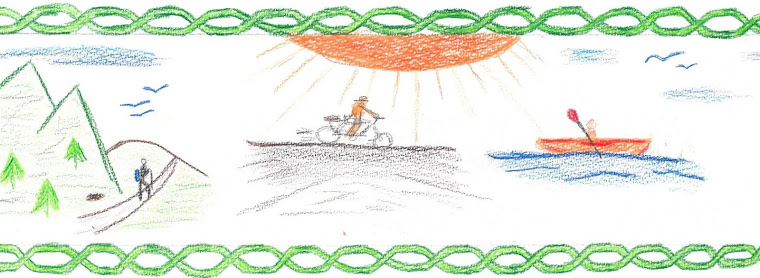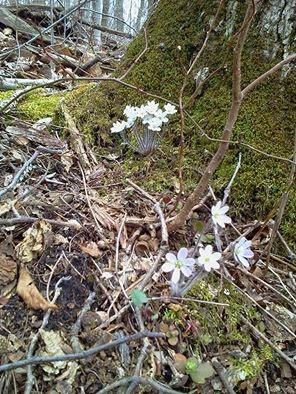“Resurrection Morn”
A Sermon based on Mk. 16:1-8, Mt.
27:62-28:15, Lk. 24:1-12, & Jn. 20:1-10
By The Reverend John Edward
Harris, D. Min.
The Presbyterian Church of Cadiz
Cadiz, Ohio
April 5, 2015
Resurrection of the Lord /
Easter
Not long after beginning to
serve as your Interim Pastor I started thinking about preaching a sermon
inspired by our Tiffany window. A little
research and reflection suggested that what our window presents is a compendium
of resurrection morning accounts from the Synoptic Gospels as well as John.
The first three Gospels—Matthew, Mark,
and Luke—are called the Synoptic Gospels; synoptic means “seen together” because
of their close similarities which enable the texts to be set out in parallel
for comparison. It is generally agreed that there is a literary relationship
among the Synoptic Gospels but that relationship is far from definitive. The
Gospel According to John compared to the Synoptic Gospels, is so sharply
distinguished—in style, wording, structure, and especially theological
emphasis, seeming to see Jesus and his ministry from such a different
perspective compared to the first three Gospels—that it stands alone showing
very little literary relationship to the Matthew, Mark or Luke (The Oxford Companion to the Bible, p.
724.).
While the Gospels were written
centuries ago, Louis Comfort Tiffany
(1848-1933) didn’t establish Tiffany Glass Company until 1885, intending to
make ecclesiastical and secular windows and, shortly thereafter, lamps.
(Tiffany & Co., his father’s firm, was independent.) In 1892 Tiffany
renamed his firm Tiffany Glass & Decorating Company and established a glass
manufacturing plant on Long Island directed by glassmaker Arthur Nash where our
window was probably created.
Our
Tiffany Window bares an 1884 Copyright from
Tiffany Glass Decorating Company and was originally designed and built for the Calvary
Methodist Church in Pittsburgh. After Calvary ordered the 10 x 20 window the
church found that it was too small for its plans so they ordered a larger one.
Presbyterians in Cadiz were therefore able to obtain it at the bargain basement
price of $2,000, which, adjusting for inflation, would be close to $50,000
today. Referred to as the Dewey Memorial Window, thanks to bequest from the
estate of Nancy Prichard Dewey which made the purchase possible, the window was
dedicated in April 1900. It was removed
in 2000, restored, and in 2001 reinstalled and rededicated at a cost of
$60,000.
The
window’s design, entitled “Resurrection Morn”, is executed in three panels. The
left panel features three women. The Gospel according to Mark is the only
Gospel that tells us specifically three women, Mary Magdalene, Mary the mother
of James, and Salome, brought spices so that they might go and anoint the body
of Jesus.
The
right panel features two men. The Gospel According to John is the only Gospel
that tells us that two men, Simon Peter and the other disciple, the one whom
Jesus loved, ran together to the tomb.
The
lower center panel features three soldiers. The Gospel according to Matthew is
the only Gospel that reports Jewish guards, without telling us how many, being
stationed at the tomb. While our Resurrection Morn features three guards, the
Resurrection Morn window now in the Calvary Methodist Church in Pittsburgh,
being larger, features four guards.
The
main center panel features Christ flanked by two white robed figures. The
Gospel According to Luke is the only Gospel that reports two beings in dazzling
clothes appearing at the empty tomb.
The
top panel features what appear to be cherubs, “supernatural creatures
associated with the presence of God, and in postbiblical tradition identified
as one of the choirs of angels.” While cherubs are mentioned nearly a hundred
times in the bible (The Oxford Companion
to the Bible, p. 107), they are not
mentioned in any of the resurrection accounts. They probably appear at the top
of our window simply for balance and decorative affect.
What our Tiffany window presents to
us, then, is not a single Gospel account of “Resurrection Morn” but a
compendium. Rather than depicting “Resurrection Morn” through the lens of any one
particular Gospel, it offers us an element from each of the four Gospels.
As I have ruminated on how our window
might shed light on the morning of the resurrection, it dawned on me that the
four groups of characters—the three women, the guard, the two men approaching
the tomb, and the two beings in dazzling clothes— offer vignettes of at least four
possible reactions and responses to the news of the empty tomb.
The first vignette I want to focus on
is that of the three women from Mark because most scholars agree that Mark is
the oldest of the Gospels and was used as
a source for both Matthew and Luke. As we already heard, Mary Magdalene, Mary
the mother of James, and Salome bought spices, the type used to embalm a
corpse, intending to anoint the lifeless body of Jesus. These three women serve
as an example of people who set out to do a good and right thing without
thinking it through, for they had no idea who would roll the stone away from
the tomb, and without the stone being rolled away, there was no way for them to
anoint the body. Yet they had the faith or determination to try anyway. Maybe
sometimes we need to set out to do what is right and good, not knowing how we
will surmount all the obstacles, but having the determination and faith to do
it anyway.
Unexpectedly finding the stone rolled
away, the three women enter to tomb. Seeing who or what is obviously an angelic
being rather than the corpse of Jesus, they tremble in their footsteps. The heavenly
messenger instructs them to go and tell Jesus’ disciples to meet Jesus in
Galilee. Mark then tells us that the women fled and, filled with bewilderment
and fear, said nothing! But, if they said nothing how can we be reading about
what they experienced? They must have eventually overcome their fear and
bewilderment and told someone.
First and foremost, let it be known that
in Mark, the oldest Gospel, it is women who first arrive at the empty tomb, women
who first learn that Jesus has been raised, and women who are instructed to go
and tell the men. Seized by terror and
amazement, they may not have told anyone right away, but eventually they must
have told someone. If nothing else, the women should warn us not to assume that
men or people with the power and authority are always the first ones to know
and experience God’s revelation.
The Jewish guard in Matthew is perhaps
the antithesis of the trio of women in Mark. Sent to secure the tomb so that
Jesus’ disciples could not go and steal the body and then claim that he was
raised from the dead, when there was a great earthquake and an angel of the
Lord appeared and rolled away the stone, the guards shook from fear and, sent
to guard the body of a dead man, became themselves like dead men. Apparently
the guard did not hear anything the angel said to the women. Afterward, some of
the guard reported to the temple authorities what they had experienced. The
religious authorities paid off or bribed the guards to lie and say they
actually saw Jesus’ disciples come by night and take away the body of Jesus
while they were asleep.
I think the account of the guards warns
us not to sell our souls and value financial gain over spiritual insight and
illumination. I think they also warn us that sometimes we in the church can go
to great lengths, and even great expenses, to guard against change when change
is what God has been about all along. They warn us not to cast aspersions
against those whose religious understanding and spiritual experiences are not
like our own, for as we seek to guard the church we may in fact be working
against new things God might be doing in the world.
In Luke, not one but “two men in
dazzling clothes” stand beside the women in the empty tomb. Obviously heavenly
messengers, they tell the women not to look for the living among the dead and
remind them of what Jesus had taught them. I think these two spiritual beings
remind us that sometimes we need an out of this world, unexplainable
experience, something or someone to give us a spiritual slap against the face
to wake us from our spiritual slumber in order to recall and better understand the
religious lessons we have already been taught but have forgotten. While we
might normally expect our religious and spiritual faculties to be awakened by
the Word of God in Scripture, Sermon, and
Sacrament, we should never rule out the unexpected and inexplicable.
While I am generally
a rational and logical kind of guy, I am also enough of a mystic to believe the
world is still filled with mystery and that God can surprise us when we least
expect it.
John, the most unique of the four
Gospels, tells us that Simon Peter, and the other disciple whom Jesus loved,
which tradition identifies as John, the author of the Gospel, ran to the tomb after hearing from Mary
Magdalene that the tomb was empty. The other disciple went into the tomb, saw,
and believed. But what did he believe? “As yet he and Peter did not understand
the scripture”, that Jesus must rise from the dead. He obviously did not
believe that Jesus had been raised. Maybe at first having doubted her, he
finally believed what Mary had told him, that the tomb was indeed empty, now
that he had seen the empty tomb for himself. And then in what seems the most anticlimactic
statement possible, the Gospel tells us that these two disciples return not to
the other disciples but to their homes.
Perhaps these two disciples warn us
not to at first doubt what others tell us about their spiritual and religious
experiences but to go look for ourselves. They might also warn us not to base
our faith on first impressions, for our first impressions might not be the
whole story, and we have not fully processed and understood what we have seen,
heard, and experienced.
Finally, focus on the window. Note
that two of the guard, sitting motionless on the ground, have their faces
covered, hiding their gaze from both Jesus and from us, but one, also sitting
on the ground, is looking toward us, as if wondering what we think, if we know
the truth or will believe his lie. The three women and the two disciples appear
to be neither looking toward nor walking toward Jesus. They are looking at and
walking toward us, as if they expect to encounter us and tell us their story.
The two motionless angelic beings frame a radiant, resurrected Christ who
appears to be descending some steps and walking straight toward us, as if he
himself intends to encounter us.
It is as if the women and the
disciples and Jesus are attempting to break the dimensions of time and space by
extending a two dimensional interpretation of the past into a three dimension experience
in the present that includes us.






